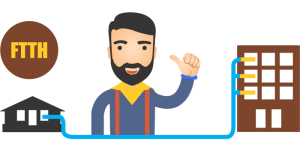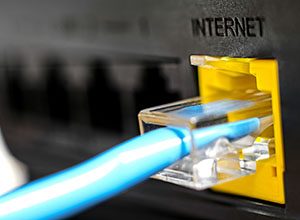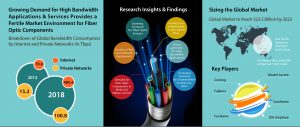Fiber Broadband Association
According to the Fiber Broadband Association, after Google Fiber (NASDAQ: GOOG), CenturyLink (NYSE: CTL), and AT&T (NYSE: T) set up FTTH deployment intentions, there was an increase in fiber-to-home deployments. The RVA and FTTH Council partnered and provided these findings which showed that acceleration of FTTH in the U.S. started in 2011. Over 3 million homes received fiber connection in America in 2015, bringing the total number of homes that had fiber broadband, by 2015, to 26 million homes, and now this number stands at over 30 million homes across the US. Also, Canada has had increased connection of fiber to the home as a result of aggressive deployments from Telus and Bell Canada.
Most of the service providers are aiming at providing speedy internet on FTTH, and a key focus has been the provision of a 1 Gbps consistent speed.
Even though many consumers will not get anywhere near 1 Gbps internet speed, Canadian and U.S. service providers such as Bell Canada are rolling out a 1 Gbps service. According to RVA, 50 percent of the over 1000 FTTH providers in the North American region anticipate offering an internet speed of a Gigabit in five years’ time. Regardless of the speed of fiber to the home, users of FTTH services report increased satisfaction with the service. Cable or DSL service providers have never recorded such confidence from customers.
The FTTH Market

FTTH lines – A new opportunity for online market.
Forget about Microsoft’s Surface 2. Ignore the iPhone 7. Disregard networking from software development. While them? Are among the most important inventions which we would not want to wish away, the biggest technological advance that has taken the American market by storm is the FTTH internet service. It is an exciting market that has continued to register continuous annual growth across the nation. Small and big providers are critical to the development of the FTTH market in the U.S.
FTTH is a golden chance for residential internet connections to spur the growth of online businesses, enhance e-governance, and increase the uptake of e-health across the U.S. Fiber optic cables are the backbone of the deployment of internet service provision, making FTTH the fastest form of the broadband technological invention. In fact, deployments from Google Fiber and Verizon FiOS can reach 1 Gbps and 500 Mbps respectively.
Benefits

FTTH provides fast connection even over long distance connections.
Fiber optic internet is advantageous since it can provide speedy internet over long distances as opposed to the ancient copper-based technologies such as Cable Internet and Digital Subscriber Line (DSL). The actual service that a customer needs depends on the company providing it, but fiber optic internet is the best bet for anyone who requires fast and reliable service. Even if the speed of broadband internet increases by 1000 percent in the next two decades, the current fiber optic connection can support it.
Cloud services in the U.S work properly, thanks to the invention of fiber to the home, which has enabled fast internet connections. Using SaaS apps from Dropbox to Google Docs requires a fast internet connection, but making the two work as desktop apps calls for another level of internet speed.
Gigabit internet may be the next generation of internet, but it will consume more bandwidth than any other iteration in history.
According to Fiber to the Home Council, the primary beneficiaries of speedy internet access in the U.S. are tele health and telemedicine. Faster internet speeds makes long distance collaboration less annoying and much easier, with an increase in all-round consumer satisfaction.



